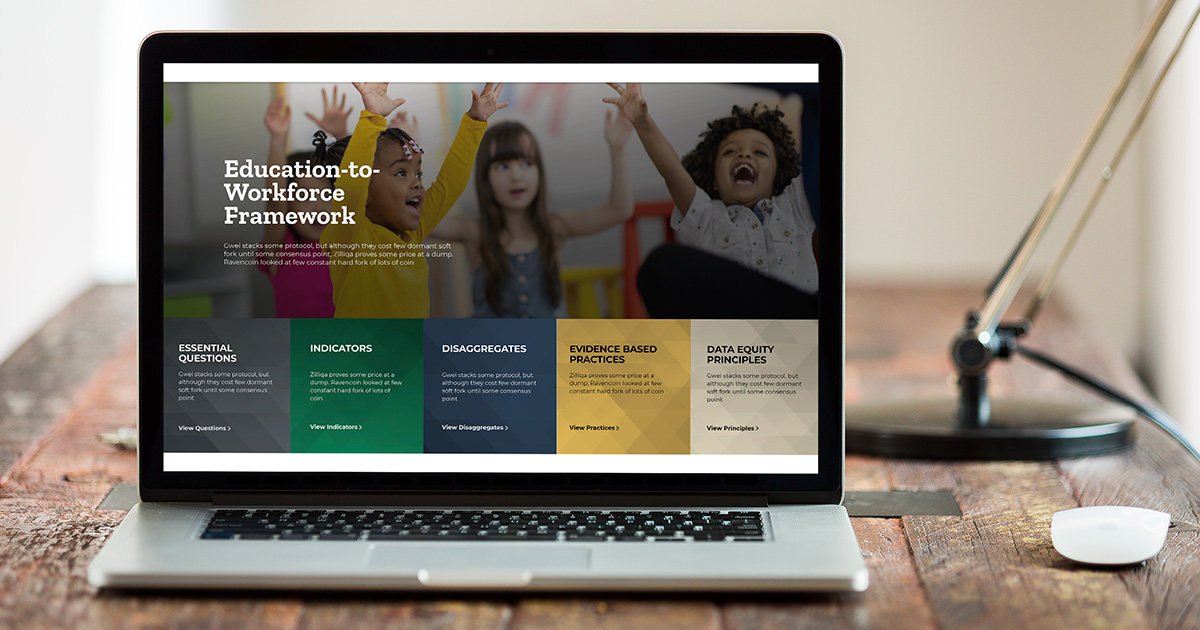A new, unique framework lays the foundation for education and workforce organizations in the U.S. to measure and address disparities along students’ Pre-K to workforce journey. Now there is a website for leaders to explore and implement the framework, which is designed to promote data collection and use that advance educational and economic opportunity for all.
The Education-to-Workforce Indicator Framework was developed with input from more than 30 experts in research, policy, and practice and 41 leading indicator frameworks in the field, with funding from the Bill & Melinda Gates Foundation. The website, launched today, takes the report released last year and organizes it so users can dig into the framework’s components and identify resources that support education and workforce data decisionmakers and advocates in driving greater cross-sector collaboration and alignment across local, state, and national data systems.
“To help students succeed, education and workforce organizations need to understand how students progress from early education through their careers, but disconnected data systems make this information hard to capture,” said Naihobe Gonzalez, Senior Researcher at Mathematica, who led development of the initial report. “The Education-to-Workforce Framework highlights key connections needed between systems to support students as they transition along their journey.”
The website captures comprehensive guidance from the framework, highlighting how to use data that matter most to help every student succeed through five components:
- Data equity principles. Seven principles for supporting responsible data use across the data life cycle, plus guidance on how to apply them.
- Essential questions. Twenty questions essential for E-W data systems to answer about how students are progressing from early education through career.
- Indicators. Ninety-nine student outcomes and milestones and related system conditions associated with economic mobility and security, plus guidance on how to measure them.
- Disaggregates. Twenty-five characteristics that E-W systems should use to break down data, plus guidance on how to collect them.
- Evidence-based practices. Twenty-six examples of practices shown to move the needle on key outcomes and system conditions, plus guidance on how to select them.
“Data can be a powerful, inclusive tool when used thoughtfully,” said Adrian Neely, Research & Evaluation Consultant at Mirror Group, one of the framework’s authors. “The website spotlights the Education-to-Workforce Framework’s Data Equity Principles, which describe how to use data to interrupt inequities and benefit all students.”
View the website here. Additional interactive functionality will be available this fall.
Contact
- Kirsten B. Miller
KBMiller@mathematica-mpr.com
202-484-5272

